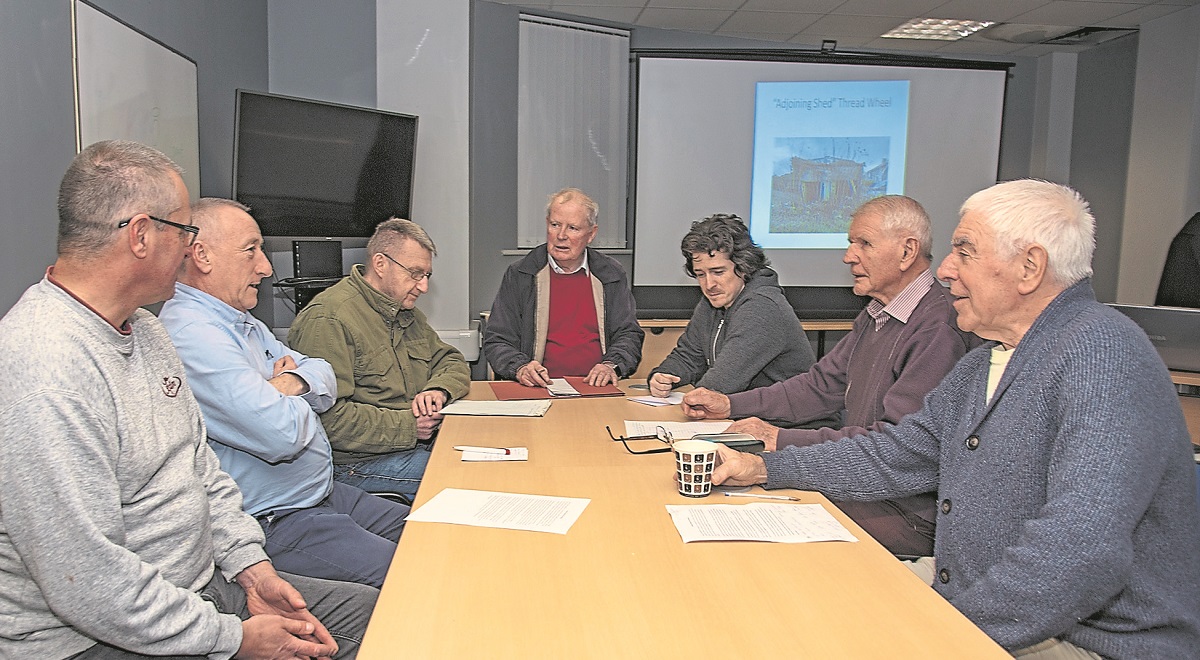THE private sale of one of Omagh’s most distinguished historical landmarks has prompted a group of local people to come together to help protect, preserve and enhance our community’s history and heritage.
The group, known as Omagh Heritage Forum, held their third meeting on Tuesday evening in Omagh Community Forum. During the meeting they decided they would endeavour to attain the status of a formal, constituted body, something they hope will give them a greater ability to positively influence decisions relating to the handling of Omagh’s heritage and history.
Speaking with Vincent Brogan, a prominent local historian and member of Omagh Heritage Forum, he explained that it was the recent sale of ‘The Governor’s House’ – a building that for 100 years lay as the heart of Omagh Gaol before its closure in 1902 – that provided the impetus for the formation of this group.
“We came together before the recent sale of ‘The Governor’s House’,” began Vincent, “initially with the intention of convincing the council to buy the property, which, of course, both represents and is itself an invaluable part of the town’s history.”
However, their lobbying was unsuccessful and failed to persuade Fermanagh and Omagh District Council to purchase the property.
Instead, ‘The Governor’s House’ went to a private buyer.
“There are 15 of us in the group and we share a common interest in local history and heritage.
“We thought that the council, if they had chosen to buy the property, could have opened this extraordinary piece of historical real estate up to the public.”
However, as Vincent explained, ‘The Governor’s House’ is a listed building, and does enjoy legal protection.
“They could not just topple it and build a new set of flats. As a B1 listed building, it is safe against external alterations, and possibly has some internal safeguards too,”
Somewhat sequestered now beneath the foliage of tall conifer trees that have grown around it, ‘The Governor’s House’ is an octagonal building positioned toward the back of what is known locally as the Jail Square.
“The presiding governor of Omagh Gaol would have resided in this building along with his family,” explained Vincent.
“From the first floor, the governor would have been able to oversee the whole jail, from the men’s section, to the women’s, as well as the debtors area, which would have housed both men and women who could not pay their debts.”
Vincent presented us with some interesting bits of trivia surrounding the story of the old Omagh Gaol, including the fact that, after its demolition in 1905, its fallen stones were used for other construction work going on locally at the time.
“There is a stone in the surrounding wall of the old Culmore School that was once the gravestone of the last man hung within the walls of Omagh Gaol. If you look closely enough, you can still see the fading letters of his name on the stone,” said Vincent.
Vincent and the group are determined to keep the history of Omagh alive.
They will be seeking the aid of other heritage groups to help protect and bolster the story of Omagh, and they hope to work closely with the council to the same end.
“Anybody who shares these interests is welcome to join us. My number is 07721 676222.”







